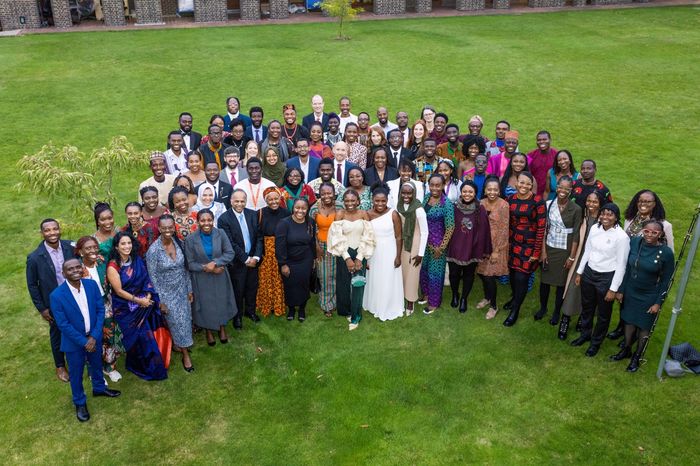Who’s in the room? Why faculty diversity matters
Ria Patel traces the racial makeup of Cambridge’s academic staff, and why faculty diversity is so important.

The demographic composition of academic staff plays a crucial role in shaping the teaching environment, particularly in humanities disciplines. At Cambridge, where white male academics remain predominant, this affects the perspectives, methodologies, and experiences of students, particularly those from underrepresented backgrounds. While academic credentials may be strong, a lack of diversity can limit the scope of discussions, negatively affect students’ sense of belonging and confidence, and continue to marginalise and undervalue staff from underrepresented backgrounds. While demographic diversity includes a range of intersectional layers, from class and gender, this article focuses on ethnicity and race.
Cambridge’s recruitment processes emphasise traditional academic excellence while often overlooking the value of diverse personal experiences, teaching styles, and perspectives. While diversity is an institutional goal, disparities persist. Cambridge University’s 2021-2022 Equality and Diversity Information Report (published March 2023) provides statistics and insight into the matter. White applicants continue to experience structural advantages in academic hiring, with 55.2% of applications leading to 78.1% of offers, translating to a 10.2% success rate. In contrast, BAME applicants, who made up 44.8% of applications, secured only 21.9% of offers, with a significantly lower success rate of 3.6%. Black applicants, in particular, had the lowest success rate at just 2.6%.
“White applicants continue to experience structural advantages in academic hiring”
While the proportion of BAME professors has increased from 7.1% in 2016 to 9.4% in 2022, progress remains slow and uneven. Asian academics form the majority within this category, while Black academics remain critically underrepresented at 0.4%. White staff continue to dominate senior roles, shaping hiring and promotion dynamics. Disaggregated data highlights that subgroups such as Black Caribbean and Bangladeshi academics face even greater exclusion. Viewing BAME as a singular category obscures these deeper inequalities. The goal should not be merely proportional equity among BAME groups but a significant overall increase in representation at all academic levels.
Reflecting on the need for students and staff from a wider range of backgrounds, History fellow Somak Biswas feels that “a well-coordinated affirmative action programme is overdue,” citing the Royal Historical Society’s promising work on dealing with racism and recruitment as an example of such. He raises the importance of seeing “BAME staff members valued for their intellectual contributions and engaged with as equals.” Somak says, “diversity is not just one thing,” stressing that “it needs to be intersectional, and cognisant of a wide range of differences.”
Students’ personal experiences further underscore the tangible impact of faculty demography on their academic lives. One student of colour, Jada, tells me: “In my nearly three years of being a History and Politics student at Cambridge, I’ve had only two lecturers who were people of colour. This is particularly striking considering the modules I’ve taken.” For instance, a module centred on African history and politics. When applying to Cambridge, she was aware of the lack of diversity among staff and students but assumed her choice of more global, African-centred, and less Eurocentric modules would mean hearing from more scholars of colour. She shares that “what makes this even more surprising is that many of the reading lists for these courses are filled with works by scholars of colour. So, it’s not a matter of a lack of qualified experts in these fields.” For example, in a module on Burundian Rwanda, which Jada very much enjoyed, she “couldn’t help but wonder what additional nuance might have been brought to discussions if I had been taught by someone from Burundi or Rwanda.” In a lecture on Marcus Garvey and the experiences of Black Americans in Jim Crow, Jada had no issue with the fact that the lecturer was white, as he was well-versed in the topic and handled it with care. However, she recalls feeling uncomfortable due to constant subtle glances from both the lecturer and students, who seemed to be “checking to make sure I wasn’t uncomfortable.” She explains that “I stopped feeling like just another student and became the Black student in the room,” noting that the lecturer’s attempts to overcompensate for their whiteness inadvertently emphasised the racial dynamic further.
“Demographic diversity is inseparable from intellectual rigor”
Another student of colour, Lily, describes how faculty responses vary, citing the controversy surrounding Nathan Cofnas in the Philosophy department, where student and faculty protests led to open discussions. But these well-meaning efforts shouldn’t distract from the lack of demographic diversity in faculties, being an issue in its own right. The absence of racially diverse representation among University fellows directly impacts student confidence and shapes their overall experience. Lily describes feeling heightened imposter syndrome due to the absence of Faculty members from similar backgrounds. She notes that speaking in seminars can be intimidating, as students from privileged backgrounds often appear immune to criticism, whereas minority students may fear being perceived as unqualified or admitted through diversity quotas. In discussion of the impact of staff demographic composition on students’ sense of belonging, Somak’s “sense is that students of colour might feel more confident speaking up in the presence of staff of colour.” Actioning of advance disclaimers and warnings, which are simple and easy to implement, would be a key introduction for when faculties cover perjorative material on race and empire.
“I stopped feeling like just another student and became the Black student in the room”
Demographic diversity is inseparable from intellectual rigour. Somak’s approach to teaching racially sensitive material is rooted in intellectual curiosity and critical engagement. He emphasises that students’ unique backgrounds provide invaluable insights and should be integrated into academic discourse. His seminars are designed to allow students to draw from their personal experiences while engaging critically with historical discourse. The goal is to encourage students to argue, differ, and discuss in ways that are respectful yet intellectually challenging, turning tensions into opportunities for deeper understanding.
In my own experience as a student of colour, I’ve also experienced teaching done well (or perhaps I should say normally). For example, while working on my dissertation about Ugandan Asians, a topic deeply intertwined with my own family’s history and racial identity, it never even crossed my mind to feel anxious or aware of the teaching demographic as my supervisor handled the topic with such normalcy and balance. He was aware of and sensitive to the issues at hand without making them feel like a massive, drawn-out ordeal. Instead of over-accentuating the racial aspect, he treated it as a natural and valid academic pursuit, allowing discussions to flow in a way that felt both intellectually engaging and personally affirming.
Good teaching isn’t about overcompensating for racial differences, nor about pretending they don’t exist. It’s about being well-tuned to these issues while fostering an environment where they don’t define the interaction. When done right, it just feels normal – which, in itself, is what makes it so effective.
Diversity in academia isn’t just about filling necessary quotas – it’s about enriching intellectual discourse and valuing BAME staff. As Somak reflects, “there is great pedagogic and intellectual value in diversity, if done carefully.” Humanities thrive on a multiplicity of perspectives, and Cambridge’s lack of staff diversity limits both teaching and the student experience. Addressing these disparities requires structural change, institutional commitment, and a recognition of the value that diverse, intersectional backgrounds bring to academia. It is not necessarily always about replacing distinguished and well-qualified white male academics, but to create space for a more diverse demographic and perspectives. Only by breaking systemic barriers can universities create a truly inclusive and representative intellectual environment.
 News / Clare Hall spent over £500k opposing busway 24 December 2025
News / Clare Hall spent over £500k opposing busway 24 December 2025 Comment / The ‘class’ of Cambridge24 December 2025
Comment / The ‘class’ of Cambridge24 December 2025 News / Caius mourns its tree-mendous loss23 December 2025
News / Caius mourns its tree-mendous loss23 December 2025 Comment / League tables do more harm than good26 December 2025
Comment / League tables do more harm than good26 December 2025 News / Girton JCR publishes open letter expressing solidarity with Palestine25 December 2025
News / Girton JCR publishes open letter expressing solidarity with Palestine25 December 2025









